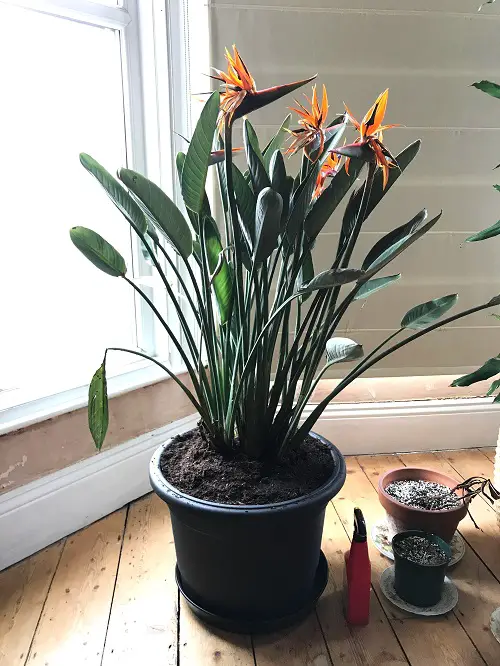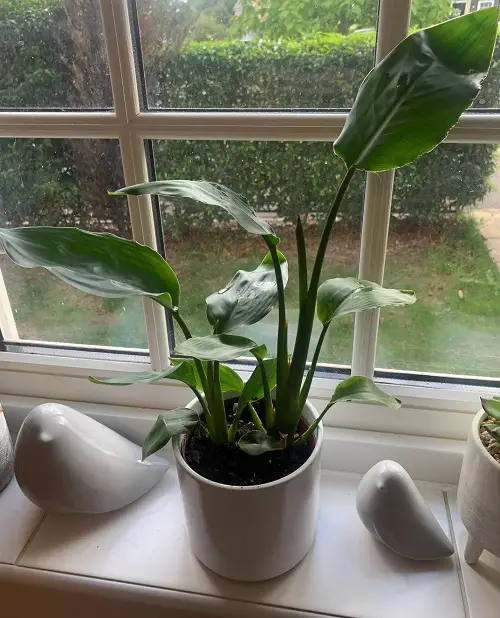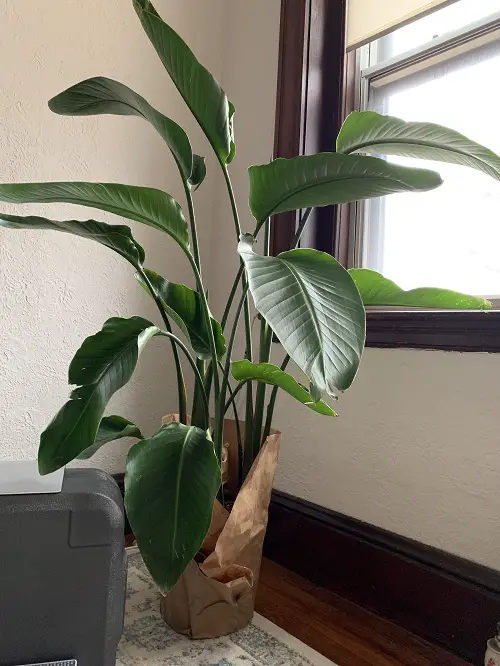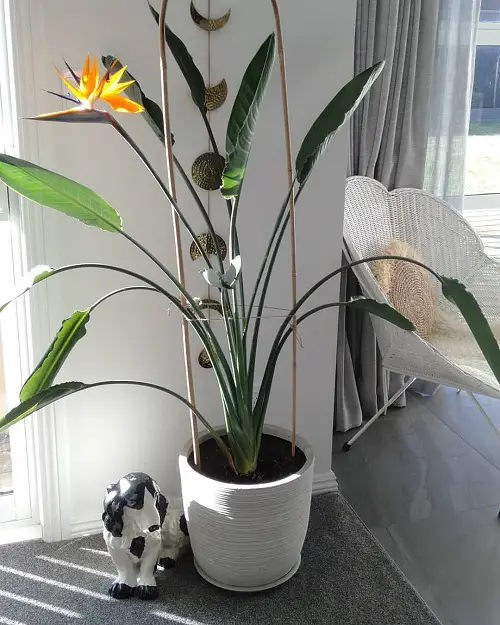If your Bird of Paradise is struggling to push out Blooms, these tricks may help! But first, remember—patience is everything!
Bird of paradise blooms are elaborately tropical, with orange, white, and blue petals resembling an exquisite bird peeking out of broad, glossy green foliage. But this South African native takes time to mature—so be patient and follow our tips!
Types of Bird of Paradise
At least five species of bird of paradise are grown as ornamentals worldwide, the most common being varieties of Strelitzia reginae. Scaling typically over six feet, this prominent cut flower needs bright indirect sunshine for about 6-8 hours daily.
Other cultivars include white and blue-petalled giant birds of paradise (S. nicolai, S. alba), which can grow over 20 feet tall; the similar but shorter S. caudata; and the rare and compact S.juncea. In this article, we will focus on the popular Strelitzia reginae.
It thrives in fertile, well-draining soil and needs ample moisture during the growing season. Much like its natural habitat, it prefers mild, moist conditions to flourish and may take up to four to sever years to begin blooming—let’s dig in!
Reasons Why Your Bird of Paradise is Not Flowering
1. It’s Not Old Enough
If you’ve only had your plant for a couple of years and are already rushing over blooms, you know the answer—it’s age. It takes anywhere from 4 to 6 years to begin flowering as this tropical plant focuses first on root and leaf development. Once it does, you’ll notice increased foliage growth and root crowding.
So, before you switch things up, all you need to do is try to remember its birthday! And if you can’t wait, always buy a mature bird of paradise from the garden center.
2. Inadequate Lighting and Watering
You may start worrying if your plant is legitimately mature but still shows no signs of bloom. The perennial subtropical flower needs ample sunshine and moisture to flower.
It needs bright indirect light or dappled sunshine all day long. If you can provide 4-6 hours of morning or late afternoon sunlight, it’s even better. It also needs an evenly moist medium throughout summer.
And let’s not forget at least 50-70% humidity, much like its natural habitat! Also, shelter it from the direct, harsh afternoon sun, and do not let the soil dry out more than a couple of inches between watering intervals.
3. Recently Divided or Repotted
Replanting in a pot too deep or excessive pruning can also hamper your plant’s ability to form its prized bird-like blooms.
Besides this, if your Strelitzia is recently transplanted, it can postpone blooming until it’s established well.
Pruning heavily also delays its blooms. A bird of paradise usually flowers on old established stems, so only trim dead and damaged leaves and don’t remove 12-18 months of growth if you want to enjoy continuous flowers.
Read this article to identify a few more common bird of paradise problems and how to solve them.
Tricks To Get Your Bird of Paradise To Bloom
Now we come to the icing on the cake—three magic tricks to get your mature bird of paradise to produce their treasured blooms!
1. Keep Your Plant Snug
Birds of paradise blooms better when slightly pot-bound. This sensitive slow-grower doesn’t like its roots disturbed, and repotting may delay blooms by up to two years! So, if your plant is sufficiently mature, keep it dense, crowded, and snug in its container.
If the soil is compacted and lackluster, you could remove old soil from the surface and top up the medium with fresh potting soil in spring. Ensure that it is shallowly planted with roots near the surface—this helps with flowering.
2. Blooms Need Cooler Weather
Much like the Christmas cactus, birds of paradise bloom better with a dose of coolness. To prepare it for blooms, gradually cool the surroundings in which the plant is kept—50-55 F (10-13 C) at night—spread over 6-8 weeks before it blooms. Do this in late fall to early winter so it flowers in late winter or spring.
In this phase, reduce watering as well! About this time, most plants start to grow slower, and Bird of Paradise is no different. Shelter your indoor plants from cold drafts and outdoor ones from frost and extremities.
3. Switch to High-Phosphorus Fertilizer
While fertilizing with a balanced fertilizer helps during its active growth, flowers call for a low-nitrogen, high-phosphorus fertilizer with an NPK ratio of 10-30-10 when it’s close to the blooming season. While nitrogen boosts foliar growth, phosphorus helps with blooms.
Use this formula in half of the manufacturer’s recommended dose every four weeks to prevent salt build up. Avoid over-fertilizing with phosphorus, as it can deplete healthy soil. Check out this guide on how to boost flowering in plants.
Follow these expert tips and tricks on your bird of paradise, and tell us how it goes in the comments below! And even if your plant isn’t ready yet to produce its blooms, sit back and enjoy its stunning, waxy foliage, which is often more coveted than the flowers!






